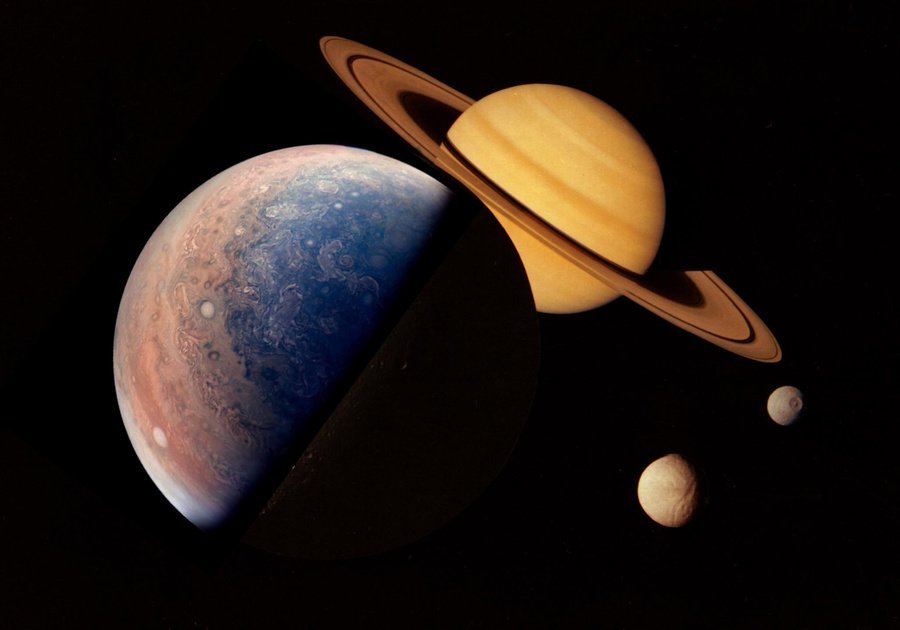You've probably already heard about The Great Conjunction of 2020, an unusual celestial event happening later this month. But you may not yet know what it is and why it's so special.
The Great Conjunction is the alignment in the sky of Saturn and Jupiter, which happens approximately every 20 years. Although actually hundreds of millions of miles apart, our two largest planets appear so close to each other that stargazers can view them both through a telescope at the same time.
The Science
During a Great Conjunction, Saturn and Jupiter appear close together because of how their orbits line up. When both planets and the Earth reach a certain point on their paths, Saturn and Jupiter appear close together when viewed from Earth.
In 2020, the planets will appear to be just 1/10 of a degree apart, or one-fifth the diameter of our Moon. This is the closest Great Conjunction since July 1623, when Galileo was studying the stars. However, the planets’ paths were too close to the sun then, so it’s unlikely that Galileo — or anyone else, for that matter — was able to view it. The last observable time they appeared this close together was in 1226, in the days of Genghis Khan and medieval knights.
Additionally, in this very unusual year, the Great Conjunction will take place on the winter solstice, December 21. This won’t happen again until the year 7541. To say it’s a rare occurrence is an understatement.
The Superstition
The Great Conjunction has long been a source of mystery and wonder, influencing the writings of philosophers, scientists, artists, and astrologers. Dante incorporated the 1325 conjunction into The Divine Comedy, considered to be one of the greatest literary works in the world. William Shakespeare supposedly wrote Hamlet under the influence of the Grand Mutation Conjunction that took place in 1600.
In the early 17th century, German astronomer Johannes Kepler speculated that the Star of Bethlehem may have been a new star that formed as the result of a planetary conjunction (albeit, not the Jupiter-Saturn conjunction).
Some have perceived a Great Conjunction to be an omen of bad things to come. Gersonides, a French Jewish philosopher, predicted the 1345 conjunction would bring “diseases and deaths which would last for a long time.” The bubonic plague, also known as The Black Death, began spreading across the globe in 1346.
Many astrologists simply see it as a sign of great change. Whether the change will be good or bad remains to be seen and probably depends on one’s perception. As Mother Aughra from the 1982 cult classic The Dark Crystal explains, “The Great Conjunction is the end of the world... or the beginning. End, begin, all the same! Big change! Sometimes good, sometimes bad!”
How to View the Great Conjunction of 2020
Look toward the southwest in the hour after sunset on Monday, December 21. Saturn and Jupiter should be visible low on the horizon. If you have a good pair of binoculars, you may be able to see all four of Jupiter’s moons. With a small telescope, you should be able to view both planets, along with Jupiter’s and Saturn’s moons.
Fun Fact: Anyone who views this celestial event with the aid of a telescope will be the first in human history to view such a close conjunction through a telescope.
If you’d like to take a photo to preserve this unique experience, NASA provides photo-taking tips for both DSLR cameras and cell phone cameras.



